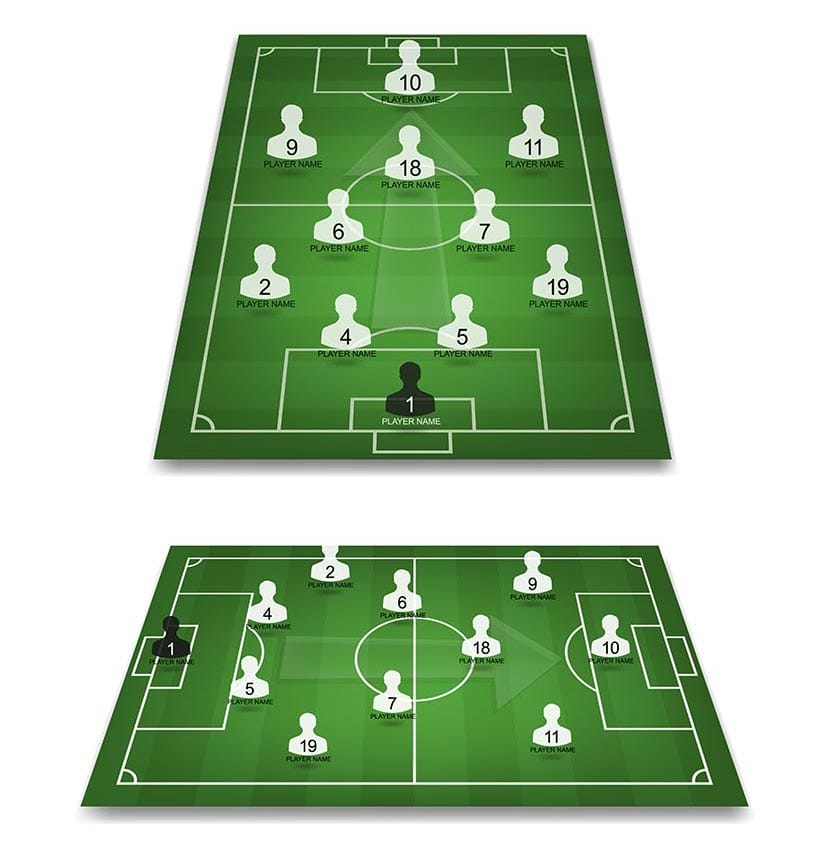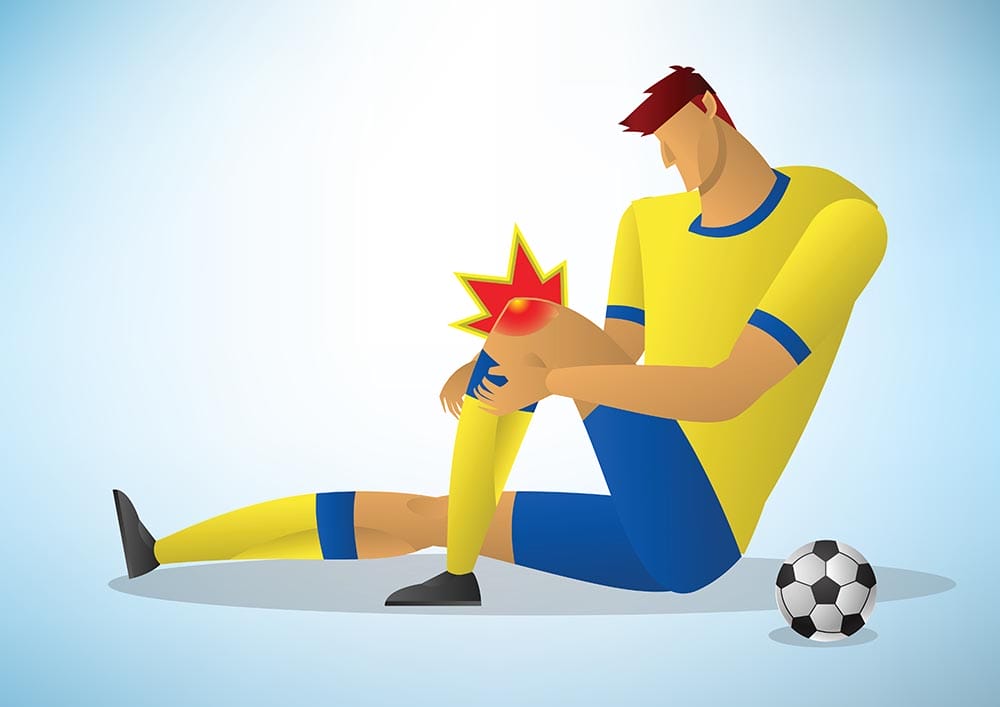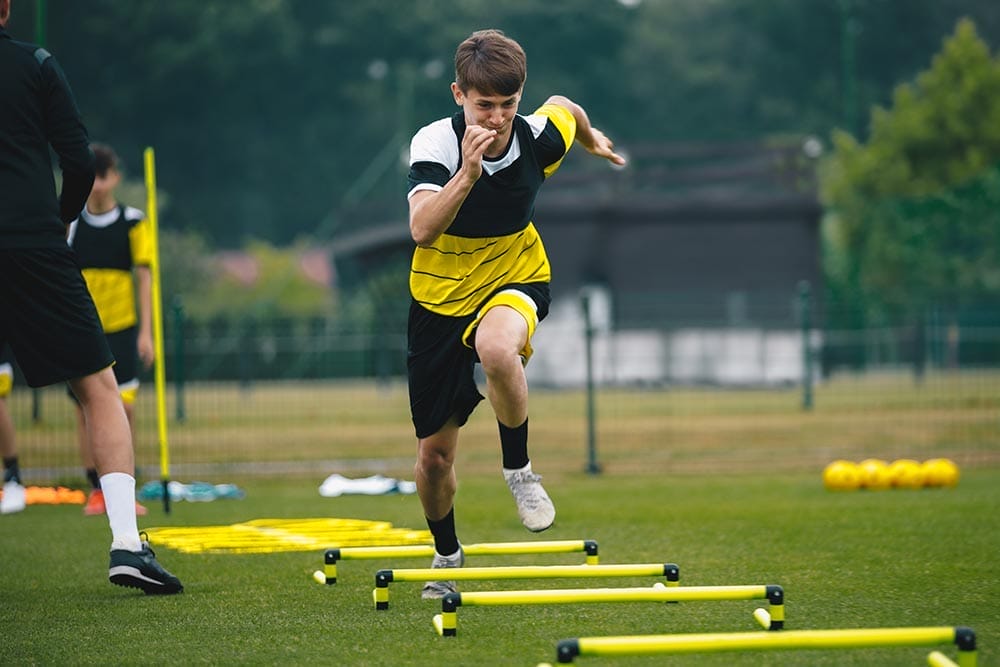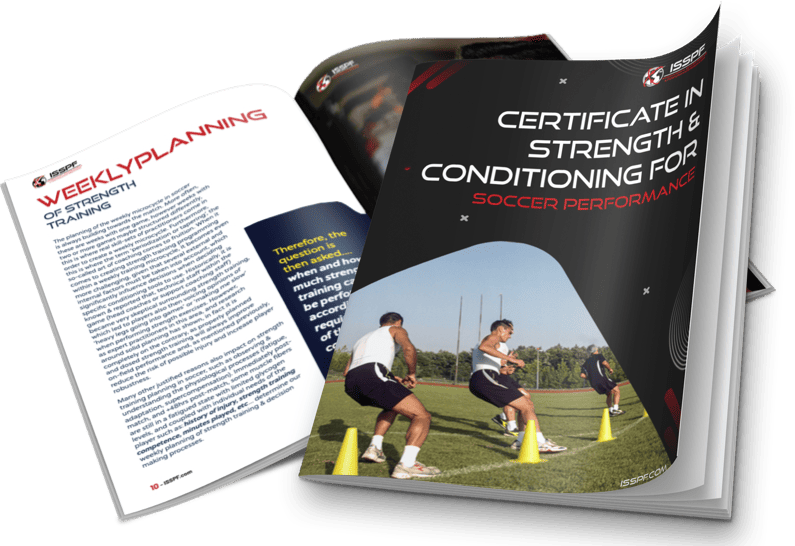Written By: Konstadinos Jani (Fitness Coach, Sport Scientist)
Elite soccer has captured the hearts of millions around the world, showcasing incredible skill, athleticism, and competition. However, the demanding schedules that players face, especially at the highest levels, have raised concerns about the impact of fixture congestion on their physical and mental well-being.
Fixture congestion refers to the situation where players are required to participate in a high number of matches in a relatively short period of time. This report delves into the multifaceted impact of fixture congestion on elite soccer players, encompassing physical, physiological, and psychological aspects.
Soccer Psychology & Mental Skills Training Course
Physical Impact
Increased Risk of Injuries
One of the primary concerns arising from fixture congestion is the heightened risk of injuries. The demanding schedule often leads to insufficient recovery time between matches, causing players to enter games with fatigued muscles and reduced reaction times.
Studies have shown a correlation between fixture congestion and an increased likelihood of muscle injuries, as well as overuse injuries like stress fractures and tendinopathies. In elite soccer, the rigorous demands of a crowded fixture schedule have raised concerns about the impact on player health and performance (Dupont et al. 2010).
Fixture congestion, characterized by frequent matches within a short timeframe, can lead to increased physical strain and a heightened risk of injuries. This report presents a comprehensive analysis of the impact of injuries during fixture congested periods in elite soccer players, supported by data and research.
Understanding Fixture Congestion and Injury Patterns
Fixture congestion refers to the scenario where players are required to participate in multiple matches within a limited timeframe, often resulting in insufficient recovery between games. This places significant stress on players’ bodies and raises the likelihood of injuries, both in terms of their frequency and severity (Howle et al. 2019).
Data Analysis of Injury Patterns
Injury Incidence & Muscle injury
Multiple studies have examined injury patterns in relation to fixture congestion. A study conducted by Ekstrand et al. (2011) analysed injury data from multiple European soccer leagues and found a significant increase in the incidence of injuries during periods of fixture congestion.
Specifically, the study reported a higher occurrence of muscle injuries, joint sprains, and overuse injuries during congested fixture periods compared to less congested times.
Muscle injuries, including strains and tears, are among the most common types of injuries observed during fixture congested periods. According to data collected from various elite soccer leagues, muscle injuries are more likely to occur when players experience reduced recovery time between matches. Muscle fatigue and inadequate rest intervals can compromise players’ muscle function, increasing susceptibility to injuries.
Impact on Specific Positions
Fixture congestion may impact players differently based on their positions. For example, midfielders and forwards who engage in frequent sprints and abrupt changes of direction may face a higher risk of muscle injuries during congested periods. Goalkeepers, while subjected to less physical exertion, may still experience overuse injuries due to the repetitive nature of their movements.
Physiological Factors Contributing to Injuries
Fatigue
Fatigue plays a pivotal role in the increased risk of injuries during fixture congested periods. A study by Rahnama et al. (2010) found that players’ muscle strength and neuromuscular control declined significantly after a congested period of matches. Fatigue can lead to altered movement patterns, decreased coordination, and a compromised ability to stabilize joints, all of which contribute to a higher risk of injuries.
Recovery and Adaptation
Optimal recovery is essential to preventing injuries. During fixture congestion, players have limited time to recover between matches. This hinders the body’s ability to adapt to the physical demands of subsequent games, making players more susceptible to muscle imbalances, reduced flexibility, and decreased joint stability.
Strategies for Injury Prevention
Monitoring Load and Recovery
Effective injury prevention strategies involve monitoring players’ workload and recovery. Sports scientists use wearable technology to track players’ physical exertion during matches and training sessions. This data helps coaches and medical staff make informed decisions about player rotation and rest (Rossi et. al 2018).
Individualized Training Programs
Tailoring training programs to individual players’ needs can mitigate injury risks. Some players may require more specific strengthening exercises or mobility work to address their vulnerabilities and prevent imbalances that can lead to injuries (Owoeye et al. 2020).
Nutritional Support
Nutrition plays a critical role in injury prevention and recovery. Adequate hydration, proper fuelling, and post-match nutrition can contribute to faster recovery and muscle repair, reducing the risk of injuries (Nedelec et. 2012).
Case Study: English Premier League (EPL)
The English Premier League is renowned for its competitiveness and fixture congestion. A longitudinal analysis of injury data from the EPL reveals that the number of injuries per match is higher during congested periods, with muscle injuries and soft tissue injuries being the most common types.
The data-driven analysis clearly indicates that fixture congestion significantly impacts the occurrence of injuries among elite soccer players. The heightened physical demands and reduced recovery time increase the risk of muscle injuries, joint sprains, and overuse injuries. Physiological factors such as fatigue and inadequate recovery further contribute to injury susceptibility. Injury prevention strategies, including load monitoring, individualized training programs, and proper nutrition, are essential for managing the challenges posed by fixture congestion.
As elite soccer continues to evolve, it is crucial for clubs, coaches, and medical staff to prioritize player well-being and employ evidence-based approaches to mitigate the impact of injuries during congested fixture periods.
Fatigue and Performance Decline
Fixture congestion can lead to physical fatigue, impacting players’ overall performance. Accumulated fatigue not only affects physical attributes such as speed and strength but also impairs cognitive functions such as decision-making and concentration. This can lead to subpar performances and potentially influence match outcomes (Nedelec et al. 2013).
Cardiovascular Strain
The intense schedule of matches can impose significant cardiovascular strain on players. Rapid recovery periods between games may not allow for adequate recuperation of the cardiovascular system, leading to elevated heart rates, blood pressure, and the potential for irregular heart rhythms. Prolonged exposure to these conditions can have long-term implications for players’ heart health.
Disrupted Sleep Patterns
Fixture congestion often requires players to travel frequently and adjust to different time zones. These disruptions can lead to irregular sleep patterns, impacting the quality and quantity of sleep. Sleep plays a crucial role in the recovery process, and its deprivation can further contribute to fatigue, decreased cognitive function, and a weakened immune system (Nedelec et. al. 2015).
Moreover, during a night soccer match, soccer players are required to perform at their peak at a time that is incongruent to their circadian rhythm. Circadian rhythm sleep disorders result from a misalignment between the timing of the circadian rhythm and the external environment (e.g., shift work) (Zee et al. 2013).
The constraints of elite soccer may influence a player’s ability to sleep adequately, potentially leading to sleep deprivation. Assuming that the optimal way to treat constraint is to match the treatment with the specific symptoms, the study of Nedelec et al. 2015 identified conducive sleep hygiene and recovery strategies to promote restorative sleep.
- *Sleep extension is a suitable strategy to counteract sleep deprivation, but some very important sleep hygiene strategies are required to promote restorative sleep (Nedelec et al. 2015)
- Use glasses fitted with short-wavelength filters after the match (e.g., in the airport, travelling from airport)
- Consume a high glycaemic index meal
- Consume protein immediately prior to sleep (e.g., milk)
- Consume Montmorency tart cherry juice concentrate and/or tryptophan-containing foods (e.g., turkey, pumpkin seeds consume high-electrolyte fluids are required to promote restorative sleep
- Create a low-light and cool (18–19C) sleep environment
- Avoid all electronic stimulants (i.e., television, mobile phones, computers) in the hour prior to sleep
- Explore the use of brainwave entrainment and meditation
- Use recovery strategies aimed at reducing muscle soreness
- Have a regular bedtime/wake time and avoid sleeping too late in the morning
- Nap briefly (i.e., 5–30 min) and appropriately (close to the early afternoon and not during the morning or evening)
- Engage in active daytime behaviours (e.g., light exercise) and bright morning light exposure during off days
Increased Stress and Anxiety
The mental toll of fixture congestion should not be underestimated. The pressure to perform consistently at a high level, coupled with the relentless schedule, can lead to increased stress and anxiety. Performance anxiety might be caused by fear of failure, negative thinking, low self-esteem, uncertainty, worry, and lack of motivation, inability to deal with difficulty, negative self-talk, self-evaluation, and overthinking (Kela et al. 2023). Players may also face the challenge of managing their personal lives amidst the demanding fixtures, adding to their psychological burden
Burnout and Mental Exhaustion
Sustained fixture congestion can contribute to burnout and mental exhaustion. The continuous cycle of training, matches, and travel leaves little time for players to recharge mentally. This can lead to a reduced enjoyment of the game, decreased motivation, and even early retirement from professional soccer.
Strategies for Mitigation
Squad Rotation
Squad rotation involves strategically resting key players during less critical matches, allowing them to recover and reducing the risk of injuries. This approach requires strong squad depth and effective communication between coaching staff and players.
Sports Science and Recovery Techniques
Leveraging sports science and recovery techniques can help mitigate the impact of fixture congestion. Implementing personalized recovery strategies, such as cryotherapy, massage therapy, and proper nutrition, can aid in faster recuperation (Dupont et. al 2013 Aspetar)
Calendar Management
Sports governing bodies and leagues play a pivotal role in managing the fixture calendar. Scheduling breaks and international windows with fewer matches can provide players with essential rest periods. Moreover, considering player input when designing the schedule can lead to a more player-friendly calendar.
Case Study
The English Premier League (EPL) & Football League is known for its intense competition and packed fixture schedule. In recent years, there have been discussions about fixture congestions impact on player welfare.
Fixture congestion remains a significant concern for elite soccer players due to its multifaceted impact on their physical, physiological, and psychological well-being.
While the demands of modern soccer may be unrelenting, it is imperative for clubs, leagues, and governing bodies to prioritize player welfare. Strategies such as squad rotation, employing sports science techniques, and effective calendar management can collectively contribute to alleviating the adverse effects of fixture congestion.
By doing so, the beautiful game can continue to thrive while ensuring that players remain at the heart of its success.
Squad Rotation in Fixture Congestion on Elite Soccer Players
Elite soccer has evolved into a highly demanding sport, where players are often subjected to intense schedules that include multiple matches within a short timeframe. Fixture congestion, characterized by a high frequency of games, poses significant challenges to player performance and well-being. One strategy that clubs and coaches employ to mitigate the effects of fixture congestion is squad rotation.
This report delves into the impact of squad rotation on elite soccer players during periods of fixture congestion, considering its benefits and potential drawbacks.
Understanding Squad Rotation
Squad rotation involves strategically alternating players in the starting line-up to ensure that the team remains competitive while minimizing the risk of player fatigue and injuries. This approach recognizes that player performance can decline due to the accumulated physical and mental strain caused by frequent matches. By rotating players, coaches aim to maintain a fresh and energetic team, particularly during congested fixture periods (Kołodziejczyk et. al 2021).
Benefits of Squad Rotation
Reduced Risk of Injuries
One of the primary advantages of squad rotation is the reduced risk of injuries.
Fixture congestion can lead to fatigue, which increases the likelihood of players sustaining muscle injuries or overuse injuries. By providing players with adequate rest and recovery time, coaches can mitigate these risks, thus ensuring the long-term availability of key players.
Enhanced Performance
Squad rotation can lead to enhanced on-field performance. Players who are well-rested are more likely to perform at their best, showcasing their skills and contributing to the team’s success. This approach also allows younger or less-experienced players to gain valuable playing time, contributing to their development and potentially uncovering hidden talents within the squad (Mohr et al. 2003).
Maintaining Tactical Flexibility
Rotating players enables coaches to maintain tactical flexibility. Different opponents may require distinct strategies, and having a deep squad allows for adjustments in playing style without compromising performance quality. This adaptability can give the team a competitive edge and enable the preservation of the team’s overall style of play.
Potential Drawbacks of Squad Rotation
Disruption of Cohesion
Frequent squad changes can disrupt team cohesion and chemistry. Soccer is a sport where understanding teammates’ movements, tendencies, and positioning is crucial.
Over-rotation might hinder the development of these relationships, potentially affecting the fluidity of play and leading to miscommunication on the field.
In a study done by Bekris et al. was found that when a large number of players participate in the initial list for the three games, more points in the domestic league were lost. Similarly, increasing the changes of players in the initial list between the 1st and the 3rd game and between the 2nd and the 3rd game a negative effect on the domestic league was observed.
As the average time of the substitutes participated in the game increases in all three games, the total points of the teams are reduced. The biggest time of changes in the 2nd game had a negative impact on the points of European games.
In order to achieve a more efficient rotation, coaches should have a qualitative and competitive roster of players. Furthermore, coaches should try to apply different tactics in previous matches in order, as many players as possible, to maintain high levels of homogeneity and competing readiness (Bekris et al. 2019).
Player Dissatisfaction
Squad rotation can lead to player dissatisfaction, especially among those who consistently find themselves on the bench. Players might feel undervalued or frustrated by their lack of consistent playing time, potentially affecting their motivation and commitment to the team. This can result in decreased morale and harmony within the squad.
Risk of Inconsistent Performances
Over-reliance on squad rotation can lead to inconsistent team performances. Frequent changes in the line-up may disrupt the team’s rhythm and style of play, potentially resulting in suboptimal performances on the field. In critical matches, coaches might face the challenge of choosing between fielding the best players or sticking to rotation principles.
Implementing Effective Squad Rotation
Data-Driven Decision Making
Effective squad rotation requires data-driven decision-making. Coaches need to analyze player fitness levels, performance metrics, and match demands to determine the most suitable players to rotate. Utilizing sports science technology and analytics can aid in making informed choices.
Clear Communication
Transparent communication with players is crucial. Coaches should explain the rationale behind squad rotation, emphasizing the importance of player health and long-term goals. This fosters understanding and buy-in from players, reducing potential dissatisfaction.
Balancing Consistency and Rotation
Finding the right balance between consistency and rotation is essential. While rotation is meant to prevent fatigue, excessive changes can disrupt team dynamics. Coaches must strike a balance that maintains performance levels while mitigating the risks of overexertion.
Case Study
Barcelona FC & Manchester City FC, both prominent soccer clubs, have historically employed squad rotation to manage fixture congestion on route to being hugely successful. During their successful years under Pep Guardiola, both clubs used a balanced approach to rotation, ensuring that key players received ample rest without compromising the team’s style of play.
Squad rotation serves as a valuable tool for elite soccer teams navigating the challenges of fixture congestion. While it comes with its share of benefits, including reduced injury risk and improved performance, coaches must be mindful of potential drawbacks, such as disrupted cohesion and player dissatisfaction.
Effective implementation of squad rotation requires a delicate balance between data-driven decision-making, clear communication, and maintaining team consistency.
As the demands on elite soccer players continue to increase, strategic squad rotation remains a vital aspect of managing the physical and mental demands of the sport, ultimately contributing to the success and longevity of both players and teams.
Elevate Your Team’s Performance with ISSPF’s Masters Certificate in Soccer Psychology & Mental Skills Training!
Are you a soccer coach who’s dedicated to nurturing champions on and off the field? The International Soccer Science & Performance Federation (ISSPF) presents the ultimate opportunity to enhance your coaching prowess through our exclusive Masters Certificate in Soccer Psychology & Mental Skills Training.
What’s in it for You?
🚀 Advanced Coaching Toolbox: Maximise the full potential of your team by integrating cutting-edge mental skills into your coaching strategies. Enhance their focus, resilience, and teamwork like never before.
🌟 Renowned Instructors: Learn from the best in the field! Our program is led by top-tier experts with hands-on experience in guiding elite athletes and teams to victory.
💡 Practical Strategies: Acquire a comprehensive set of practical techniques that you can seamlessly implement into your coaching routine. Elevate your athletes’ performance while fostering their mental well-being.
🧠 Tactical Insights: Understand the psychology behind effective decision-making, leadership, and communication. Elevate your coaching with a deep understanding of the mental aspects of the game.
🏆 Gain a Competitive Coaching Edge: Equip your team with the mental strength to triumph in high-pressure situations. Elevate their confidence and motivation, giving them the edge over opponents.
🌐 Flexible Learning: Our online platform allows you to access the course content from anywhere in the world, ensuring minimal disruption to your coaching schedule.
🎓 Recognized Certification: Graduates earn a prestigious Masters Certificate, showcasing your expertise in soccer psychology and mental skills training.
Share this article:
















